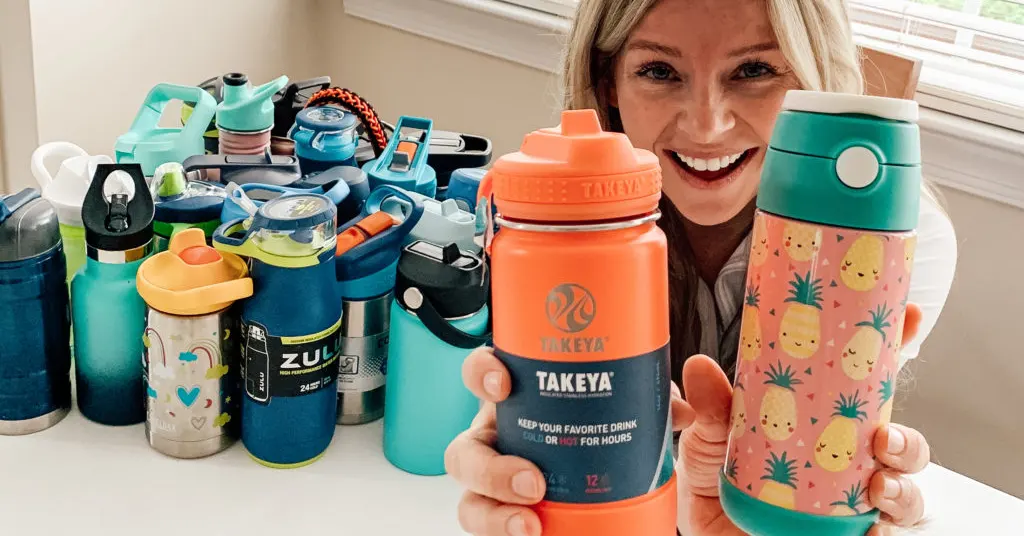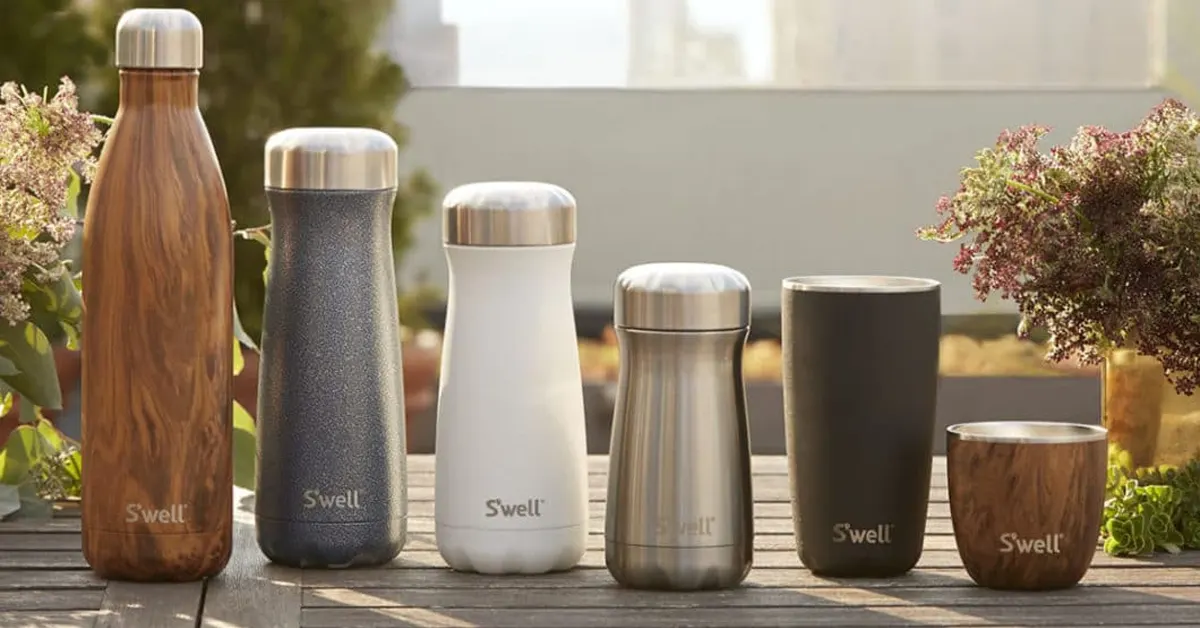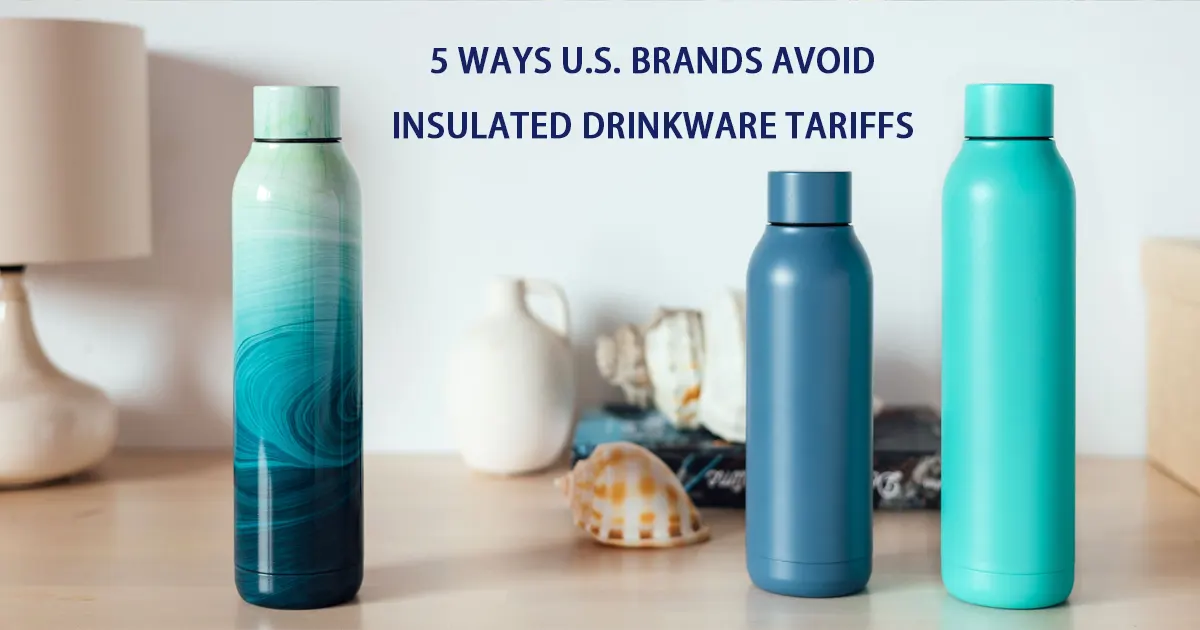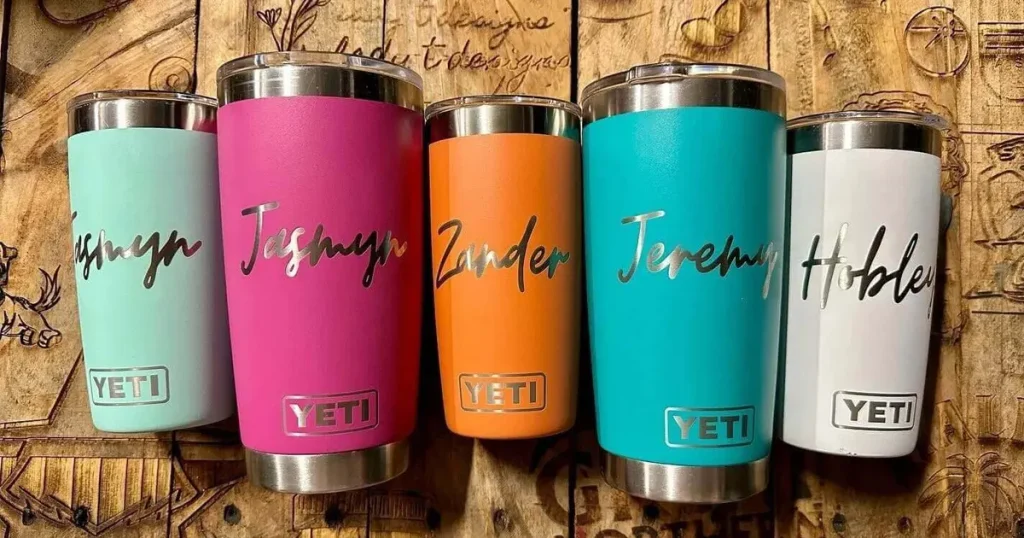Table of Contents
5 Ways U.S. Brands Avoid Insulated Drinkware Tariffs
In 2025, U.S. brands importing stainless steel drinkware face significant challenges due to a 25% tariff on steel and aluminum imports and a 10% universal tariff, with Chinese goods facing rates up to 30% following a temporary U.S.-China agreement (U.S. Trade Representative, May 2025). These tariffs increase costs and disrupt supply chains for products like tumblers, water bottles, and thermoses. This guide outlines five actionable strategies to help U.S. brands avoid high tariffs, optimize costs, and ensure efficient imports.
The Financial Impact of Tariffs
Eroding Profit Margins
The 25% tariff on steel imports directly raises the cost of stainless steel drinkware, reducing profit margins. For example, a $20 wholesale tumbler incurs an additional $5 in tariffs, forcing brands to absorb costs or raise prices.
Impact on Consumer Pricing
Higher tariffs often lead to increased retail prices, risking customer pushback. A 2025 trade report estimates that 60% of U.S. brands have passed tariff costs to consumers, affecting competitiveness (U.S. International Trade Commission, 2025).
Temporary Tariff Relief
On May 12, 2025, the U.S. and China agreed to a 90-day tariff reduction, lowering rates on Chinese goods from 145% to approximately 30%. However, it’s unclear if stainless steel drinkware (HS code 9617.00) is included. Brands must verify applicability with customs authorities.
5 Strategies to Avoid High Tariffs
1. Source from Tariff-Friendly Countries
Manufacturing in countries like Cambodia, Thailand, or Mexico avoids the 25% steel tariff and high Chinese tariffs. For instance, Mexico’s proximity to the U.S. reduces shipping costs and delivery times, enhancing efficiency.
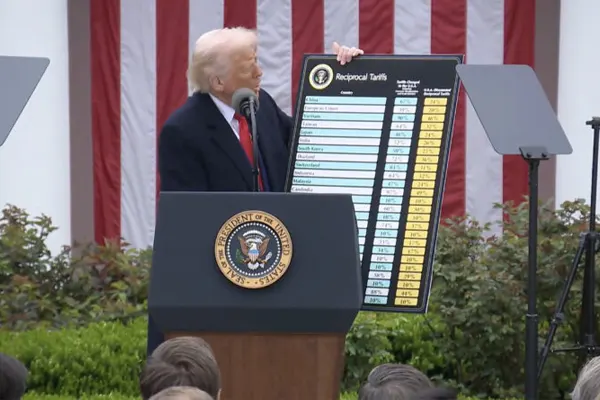
2. Use Correct HS Codes
Accurate HS code classification (e.g., 9617.00.1900 for vacuum bottles) ensures proper tariff rates. Misclassifying drinkware as kitchenware (7323.93) can increase duties from 2.7% to 3.4% in the U.S. Verify codes with suppliers and customs brokers.
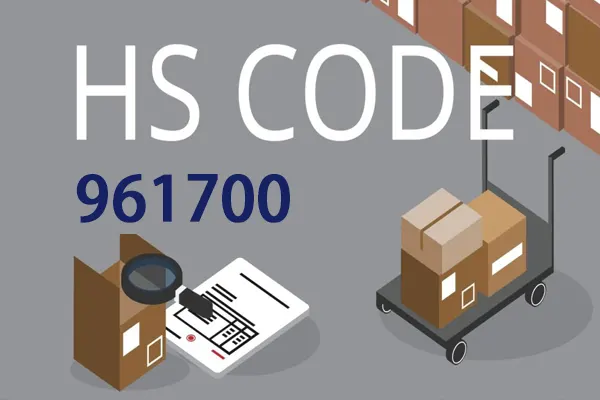
3. Leverage Free Trade Agreements
The USMCA (U.S.-Mexico-Canada Agreement) allows tariff-free imports from Mexico for qualifying goods. Ensure suppliers meet USMCA origin rules to eliminate duties on stainless steel drinkware.
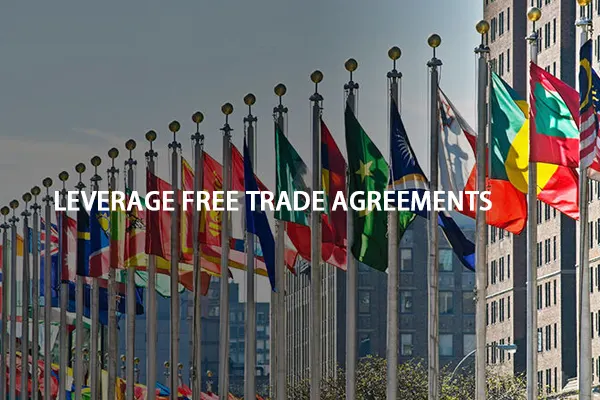
4. Diversify Supply Chains
Relying on multiple manufacturing locations reduces risks from tariff hikes or trade disputes. A diversified supply chain ensures stability if one country faces new tariffs.
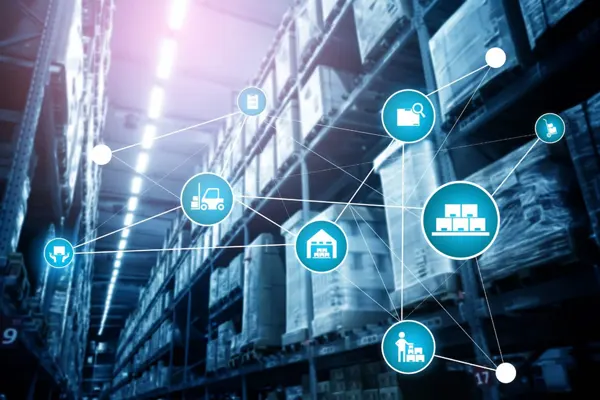
5. Negotiate with Suppliers
Work with suppliers to share tariff-related costs or optimize production for lower-duty materials. Request detailed HS code breakdowns and consistent documentation to streamline customs processes.

| Product Type | HS Code | U.S. Tariff Rate (2025) | Notes |
|---|---|---|---|
| Vacuum Bottles | 9617.00.1900 | 2.7% (non-China) / 30% (China) | Verify temporary tariff relief |
| Vacuum Cups | 9617.00.9000 | 2.7% (non-China) / 30% (China) | Includes tumblers |
| Insulated Food Jars | 9617.00.9000 | 2.7% (non-China) / 30% (China) | For meals, not beverages |
| Plastic Lids/Straws | 3924.10.4000 | 3.1% | Separate classification |
Source: U.S. International Trade Commission, 2025.
Common Tariff Mistakes to Avoid
- Incorrect HS Codes: Misclassifying stainless steel drinkware as general kitchenware increases duties.
- Ignoring Accessories: Lids or straws may have different HS codes (e.g., 3924.10.4000), leading to customs disputes.
- Assuming Tariff Relief: The U.S.-China agreement may not apply to drinkware. Always confirm with customs authorities.
- Single-Country Dependency: Over-reliance on Chinese manufacturing risks high tariffs and supply chain disruptions.
How to Implement Tariff-Free Sourcing
- Verify HS Codes: Request suppliers provide HS codes for all components, including accessories like lids.
- Choose Tariff-Friendly Suppliers: Partner with manufacturers in Mexico, Cambodia, or Thailand to avoid high tariffs.
- Leverage USMCA Benefits: Ensure products meet USMCA origin rules for tariff exemptions.
- Consult Customs Experts: Use resources like the U.S. Customs Service or World Customs Organization for accurate classifications.
- Monitor Tariff Updates: Stay informed about trade agreements, such as the 2025 U.S.-China temporary reduction.
Conclusion: Optimize Your Drinkware Imports
High tariffs on stainless steel drinkware challenge U.S. brands, but strategic sourcing can minimize costs and ensure competitiveness. By leveraging tariff-friendly manufacturing, accurate HS codes, and free trade agreements, brands can streamline imports and protect profit margins. Consult customs experts or refer to the U.S. International Trade Commission for the latest tariff guidance.
More questions? Please feel free to contact YKSC, the leading vacuum insulated stainless steel water bottle manufacturer. Send an email to [email protected], you will get quick response within 24 hours.
Have Anything To Ask Us?
Please fill in the detailed information in the form, and we will contact you as soon as possible
